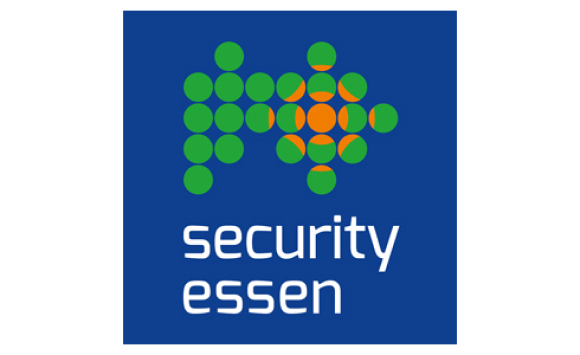Cameras: Proven Technology with Limitations

For decades, cameras have been the standard in surveillance technology. Their ability to deliver visual information in real time makes them a trusted tool in countless security applications. Cameras support rapid response, help identify individuals, and provide crucial visual evidence. Whether used in buildings, public spaces, or secure facilities, they play a central role in tracking activity and documenting incidents.
But in the LiDAR vs. camera comparison, cameras show clear limitations. Their performance can drop significantly in low light, fog, or when affected by glare. In public spaces, cameras also raise privacy concerns due to the personal data they collect, including facial features and identifying clothing.
LiDAR: The Innovative Security Solution
Although LiDAR systems are often seen as more complex and costly, they offer a cutting-edge alternative to traditional visual surveillance. Unlike cameras, LiDAR sensors are active devices: they emit laser pulses to generate highly detailed 3D models of their surroundings. These point clouds provide precise information about object location, movement, and size, regardless of lighting or weather conditions.
Another major benefit in the LiDAR vs. camera debate is privacy: LiDAR doesn’t capture personally identifiable visuals. Instead, it records anonymous spatial data, making it ideal for public settings where data protection is a top concern.

Comparison of LiDAR vs. Camera
To evaluate LiDAR vs. camera effectively, several key aspects must be considered. These include how reliably each system operates under varying conditions, how efficiently they process data, and how accurately they detect and classify objects. Integration into existing infrastructure, compliance with privacy and data protection standards, as well as both initial investment and long-term operating costs, also play a crucial role in the decision-making process. Each technology has its own strengths in these areas – and in many cases, the optimal solution is not a choice between one or the other, but a thoughtful combination of both.
Round-the-Clock Monitoring Performance
Cameras rely heavily on ambient light. At night or in poor weather, their effectiveness decreases. Glare from sunlight or reflections can also distort images. Cameras may need additional lighting to function properly in the dark.
LiDAR, in contrast, works 24/7 in any condition. Its laser-based sensing is unaffected by external light or weather. When comparing LiDAR vs. camera for consistent reliability, LiDAR clearly excels in harsh or changing environments.
Data processing, object recognition and false alarm rate
High-resolution cameras capture detailed 2D visuals, but lack depth perception. This absence of spatial data can lead to misinterpretations – e.g., shadows or painted surfaces may be misclassified as physical objects. Cameras are also more prone to false alarms from animals, wind-blown objects, or lighting changes. While AI-enhanced cameras try to compensate, the structural lack of depth remains a key limitation.
LiDAR systems, by contrast, deliver 3D spatial data. They can accurately determine whether an object is an intruding person or a small animal. Software-defined zones ensure that only relevant movements trigger alerts. In the LiDAR vs. camera comparison, LiDAR offers a significant advantage in reducing false alarms and increasing system efficiency.
System Integration and Infrastructure Compatibility
Cameras are easily integrated into established video management systems (VMS), which makes them simple to deploy. LiDAR, while requiring more processing power due to its richer data output, can also be integrated into existing VMS through interfaces like ONVIF.
With advanced solutions such as QbProtect, which analyze LiDAR data directly on the device, large data transfers over the network are avoided. This reduces latency and conserves bandwidth, boosting overall system performance.
Data Protection and Privacy
In the LiDAR vs. camera conversation, privacy plays an increasingly important role. Cameras inherently capture identifying features like faces or clothing, raising regulatory concerns in public and semi-public environments.
LiDAR stands out here. It collects anonymous spatial data without recording personal details. This enables privacy-compliant monitoring – especially important in places like airports, stadiums, or transportation hubs. In data-sensitive sectors, LiDAR offers a clear edge.
Investment Costs
Cameras are a cost-effective option for many scenarios. However, their limitations can lead to higher operating costs due to maintenance, lighting requirements, and false alarm handling.
LiDAR systems come with higher initial costs, but offer long-term value through better detection accuracy and reduced false alarms. In mission-critical security environments, these benefits often outweigh the initial investment.
Typical Areas of Application LiDAR vs. Camera
Example: Retail Surveillance with Cameras
One of the most common use cases for surveillance cameras is in the retail sector. Here, cameras play a vital role in preventing theft and monitoring customer areas. Their ability to deliver high-resolution images allows for the clear identification of individuals – be it customers, staff, or potential shoplifters – which is essential for safeguarding goods and ensuring operational security. Continuous live monitoring enables security personnel to respond to suspicious behavior in real time, helping to prevent incidents before they escalate. In addition, the integration of camera systems into established video management platforms supports structured analysis and targeted responses after an event has occurred. Beyond their operational benefits, the visible presence of cameras also has a preventative effect: it creates a sense of security for customers and staff alike while acting as a deterrent to would-be offenders.

Example: Fence Monitoring with LiDAR
A scenario where the advantages of 3D LiDAR technology become particularly clear is fence monitoring. Traditional camera systems often reach their limits in this context: in poor lighting, direct sunlight, fog, or rain, image quality can degrade significantly. This increases the likelihood of missed detections or false alarms triggered by irrelevant movements, such as rustling leaves or small animals. LiDAR sensors, by contrast, offer consistent and accurate detection regardless of ambient lighting or weather conditions. An alarm is only triggered when a real intrusion occurs, for instance, when someone crosses the virtual boundary. Multiple virtual zones can also be configured around a fence to track suspicious movements near, but not yet breaching, the perimeter. Crucially, LiDAR’s ability to differentiate between object sizes allows it to ignore non-threatening activity, such as that caused by wildlife, and thereby significantly reduces false alarms. This makes it a highly reliable solution for securing critical outdoor areas around the clock.
Conclusion: LiDAR vs. camera – competition or team player in the security architecture?
The LiDAR vs. camera comparison reveals that both technologies offer distinct strengths. Cameras are cost-effective and provide rich visual data for identification. However, they are vulnerable to environmental conditions and raise privacy concerns. LiDAR delivers accurate 3D detection, is unaffected by light or weather, and excels in privacy compliance – though it comes at a higher cost.
Choosing the right solution ultimately depends on the specific use case. In many scenarios, however, LiDAR vs. camera is not a question of either-or. Instead, combining both technologies can prove to be an effective approach. For instance, a LiDAR sensor can be used to trigger a surveillance camera only when motion is detected within a defined zone, ensuring targeted image capture while conserving resources. In high-security environments, a redundant setup that integrates both LiDAR and camera systems can greatly enhance detection accuracy and overall system reliability. The future of intelligent security doesn’t lie in competition between technologies, but in their seamless collaboration.








